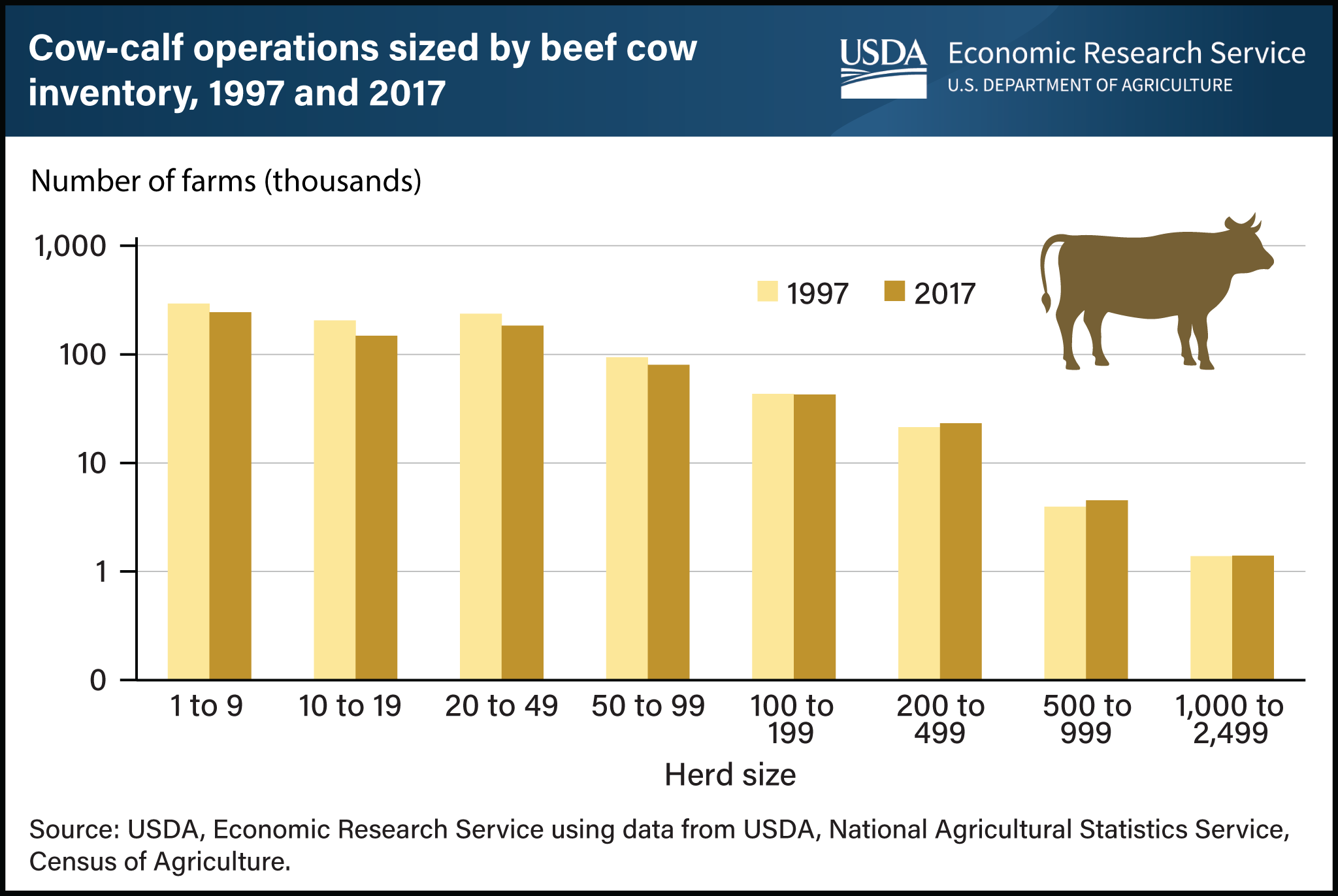Smaller cow-calf operations still outnumber large operations, but herd sizes have increased
- by Jeffrey Gillespie and Sara Scott
- 8/17/2023

In the United States, most cow-calf operations are relatively small and have fewer than 50 cows though a few very large operations (with more than 1,000 cows) can be found. On cow-calf farms, calves are birthed, raised, and weaned on site. While some calves remain on the farm until they reach slaughter weight, most are either moved directly to feedlots after weaning or retained on-farm for additional weight gain before being sold to feedlots. Unlike many other animal production operations, cow-calf farms generally do not require a major upfront investment in capital assets specific to cow-calf production, such as housing. The combination of relatively lower cow-calf specific startup costs and pasture as a primary source of feed has resulted in a variety of operation sizes on a range of land types for both full- and part-time farmers. Data from USDA, National Agricultural Statistics Service, Census of Agriculture indicate that between 1997 and 2017, most cow-calf operations remained small. In 2017, 54 percent of farms with beef cows had fewer than 20 cows, slightly down from 1997. However, across the two decades, the overall number of cow-calf operations in the United States decreased by 19 percent, while the average herd size of operations grew. These changes in farm number and herd size, while notable, have not been as significant as industry shifts in hog and dairy production. This chart is drawn from the USDA, Economic Research Service report Structure, Management Practices, and Production Costs of U.S. Beef Cow-Calf Farms, published in July 2023.


